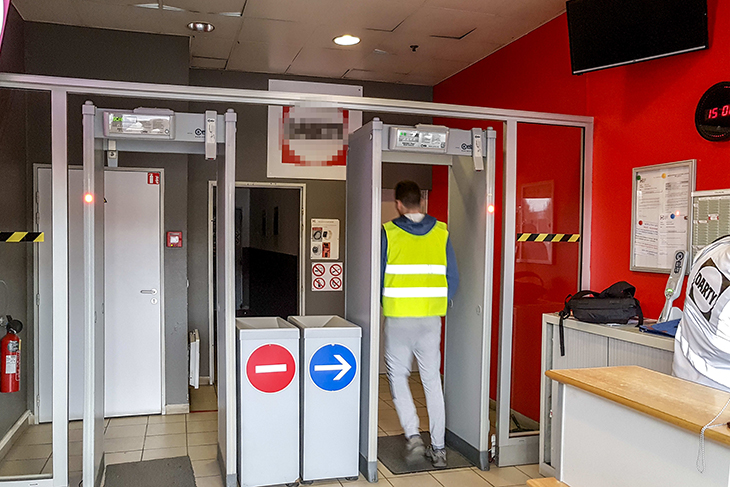100 kg of copper earns thieves 1,000 euros: a high-precision walk-through metal detector reliably prevents theft of metal-containing objects and avoids employee jams during shift changes.
Metals are a component of numerous products such as jewelry, chips and vehicles. A loss of the valuable raw materials and products can lead to delivery delays and high replacement costs for the affected companies. The SMD601 Plus Profiling from CEIA GmbH provides a remedy: the walk-through metal detector detects deviating metal concentrations on employees between entering and leaving the security area with high precision.
Prices for intermediate goods in Germany have continued to rise in recent years: According to the Federal Statistical Office, the price increase for metals in November 2021 was around 37.8 percent year-on-year. At the same time, companies in the metal and electrical industry in Germany have been struggling with massive supply and supply chain problems for months: according to a survey recently conducted in October by the employers' association Gesamtmetall, around 96 percent of the 1,485 companies surveyed said they were still affected by supply bottlenecks. For 89 percent of the companies, this led to price increases. The theft of metal-bearing raw materials is therefore particularly lucrative. “Until now, it was hardly possible to comprehensively prevent theft in larger companies,” explains Lars Heckmann, business development and marketing manager at CEIA GmbH. “At most, spot checks were carried out at a high cost when employees changed shifts.”
CEIA GmbH now offers a time- and cost-saving solution for this: The SMD601 Plus Loss Prevention pass-through metal detector with profiling is specifically designed to detect metal-containing components such as electronic parts, precision mechanics, jewelry, and precious metals. The device not only detects how much metal the person passing is carrying on their body, but also determines if the person is carrying amounts of metal that differ from the incoming measurement when they walk out, such as during a break or at the end of their work shift. “The metal detector performs a difference adjustment,” Heckmann states. “Depending on the desired setting, environment, and clothing, the device detects differences well below one gram – for example, 0.4 grams of copper foil for the IT industry – so that even the smallest amounts of metal can be detected.” For an even more precise examination, CEIA also offers handheld metal detectors.
Profiling option enables capturing individual metal signatures
To prevent the device from triggering an alarm every time an employee passes through the detector with, for example, metal-containing prostheses or personal jewelry, a profiling option in the form of a digital metal signature exists. “Employees are each given a user card that is read using a scanner before entering the detector,” Heckmann explains. “By registering with the CEIA metal detector, the employee's personal metal profile can be captured and stored in an encapsulated and encrypted memory, making the detector compliant with the GDPR and protecting the employee's privacy.”
The MDNA (Metal Detector Network Appliance) ensures even easier handling. The synchronization and management system enables encrypted connections of up to 50 walk-through detectors. “To prevent every employee from having to leave the site through the same detector through which they entered, the detectors can be networked with each other,” Heckmann explains. “In this way, jams can be avoided at shift changes or during breaks.”
Further information online at: www.ceia.net




















